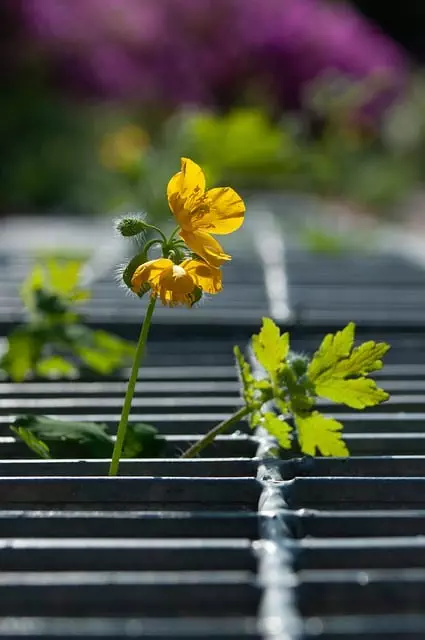The Kratom Tree (Mitragyna speciosa), native to Southeast Asia's tropical rainforests, is a revered plant known for its robust leaves and cultural significance. Its unique alkaloids, mitragynine and 7-hydroxymitragynine, offer therapeutic benefits. Proper cultivation focuses on soil, water, and sunlight balance to produce high-quality leaves, accessible through kratom capsules gaining global popularity. The Kratom Tree symbolizes resilience and community bonds, deeply rooted in local traditions and social interactions, despite international perceptions.
The Bali Kratom Capsules: Unlocking Nature’s Wonders
Discover the captivating kratom tree (Mitragyna speciosa), a natural marvel with deep roots in Southeast Asia’s cultural heritage. Explore its diverse strains and unique properties, from energetic to calming effects. This article delves into Bali kratom capsules—their advantages, types, and safety considerations. Learn about responsible use, dosages, potential side effects, and legalities. With the right knowledge, unlock the benefits of this remarkable natural supplement.
- The Kratom Tree: A Natural Wonder
- – Description and origins of the kratom tree (Mitragyna speciosa)
- – Its cultural significance in Southeast Asia
The Kratom Tree: A Natural Wonder
The Kratom Tree (Mitragyna speciosa) is a majestic and enchanting plant that has captivated users for centuries. This slow-growing tree, native to Southeast Asia, thrives in tropical climates and is revered for its robust leaves, which hold immense cultural and medicinal value. The kratom tree image symbolizes resilience and natural power, as it stands tall against the elements, offering a rich source of alkaloids that have garnered global interest. Its complex composition includes various compounds, such as mitragynine and 7-hydroxymitragynine, which contribute to its unique effects on the body and mind.
Cultivating and harvesting kratom trees demand meticulous care, ensuring optimal conditions for their growth. The delicate balance of soil, water, and sunlight plays a pivotal role in producing high-quality leaves. With proper cultivation practices, these natural wonders can flourish, providing a sustainable supply of kratom capsules that are gaining popularity worldwide. Each capsule encapsulates the essence of the tree’s strength and resilience, making it accessible for those seeking its therapeutic benefits.
– Description and origins of the kratom tree (Mitragyna speciosa)
The kratom tree, scientifically known as Mitragyna speciosa, is a captivating and relatively obscure species native to Southeast Asia. This evergreen plant thrives in tropical rainforests, particularly on the islands of Borneo, Sumatra, and Sulawesi. The kratom tree stands out for its unique composition, bearing both opiate-like alkaloids and stimulants, which contribute to its diverse effects on users. Its leaves are typically harvested and processed into various forms, including capsules, ensuring a convenient and controlled dosage for consumers seeking its therapeutic benefits or recreational use.
Visualizing the kratom tree (image search can provide an illustrative view) reveals a robust plant with large, compound leaves that grow in pairs along its sturdy stems. The flowers are small and often inconspicuous, but the real interest lies in the leaves’ chemical composition. Mitragyna speciosa has gained worldwide attention for its potential medicinal properties, including pain relief, mood elevation, and anxiolytic effects. However, it’s crucial to approach kratom use with caution, as individual responses can vary greatly due to the tree’s complex chemical profile and the various preparation methods employed to derive kratom products, such as capsules.
– Its cultural significance in Southeast Asia
The kratom tree (Mitragyna speciosa) holds a significant place in the cultural fabric of Southeast Asia, particularly on the Indonesian island of Bali. This enduring presence is deeply rooted in local traditions and practices. For centuries, the kratom leaf has been used not only for its physiological effects but also as a social lubricant in communal gatherings and ceremonies. Its image adorns traditional art and rituals, symbolizing harmony, resilience, and community bonds.
In Bali, kratom capsules are more than just a means to consume the plant’s compounds; they are a vessel that connects individuals to their cultural heritage. The preparation and consumption of kratom are often communal affairs, fostering social interactions and strengthening interpersonal relationships. This tradition has persisted despite the evolving global perception of kratom, reflecting the enduring cultural significance of the kratom tree in Southeast Asia.
The kratom tree (Mitragyna speciosa) is not just a plant; it’s a cultural icon in Southeast Asia. Its rich history and diverse uses highlight its significance as both a natural wonder and a symbol of resilience. Bali Kratom capsules, derived from this remarkable tree, offer a unique experience for those seeking herbal alternatives. Remember that, while exploring the benefits, understanding the source, such as the kratom tree image, is key to making informed choices.






